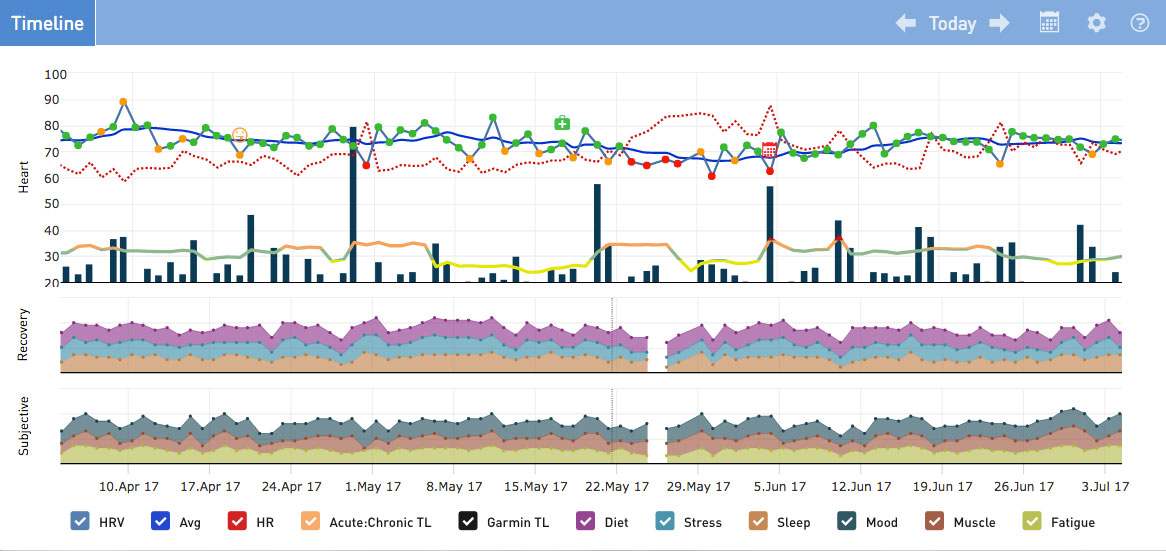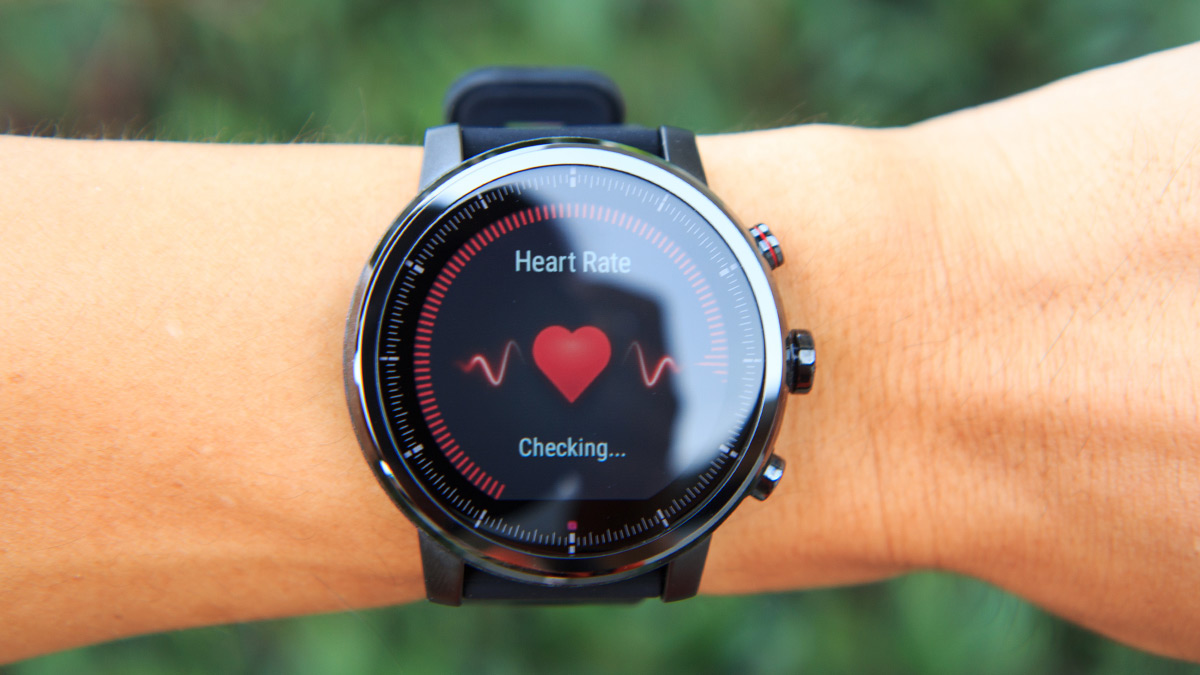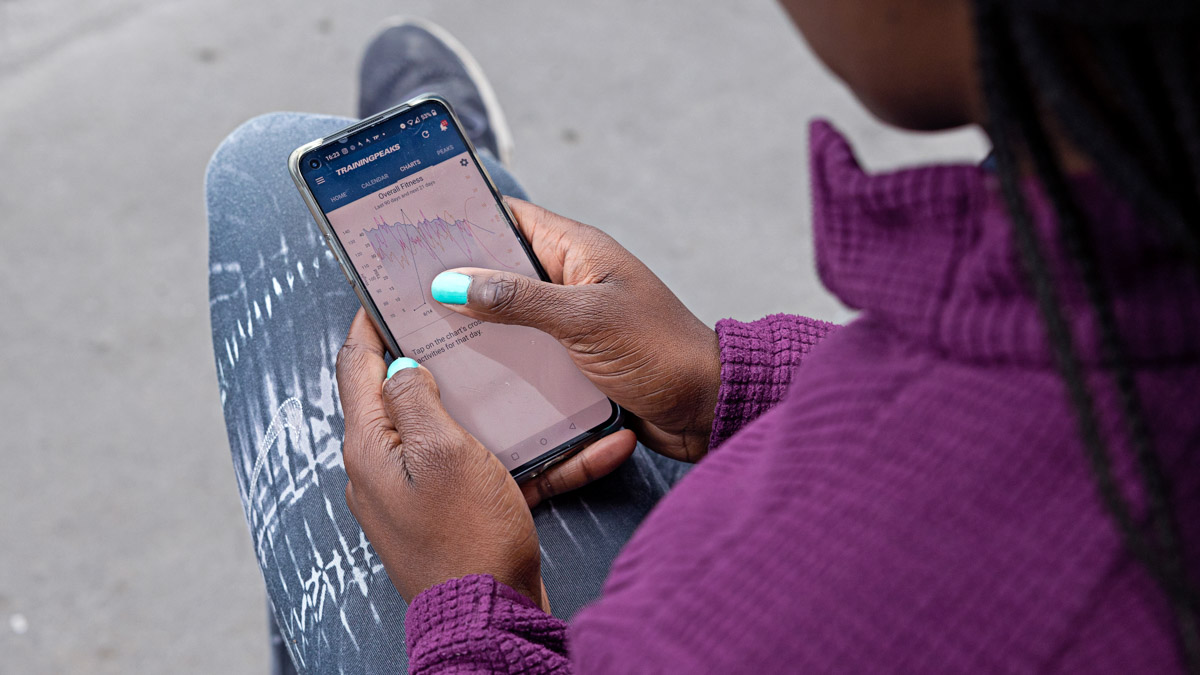Originally used in critical monitoring situations in hospitals and aerospace, heart rate variability (HRV) analysis is a sensitive measure. When used with care, HRV can provide valuable insights into how well your body is coping with training and adaptation. It has recently become popular among athletes thanks to the availability of easy-to-use apps and accurate sensors.
However, HRV products can appear deceptively simple, and you need to take care when both measuring and interpreting HRV to get the most out of it. In this article, we will list some of the common misconceptions about training with HRV, and how they can be avoided.
1. HRV Doesn’t Tell You Any More Than Resting Heart Rate (HR)
Although an elevated resting HR has been used as an indicator of pending overtraining, it is a blunt instrument, and by the time it is elevated, the damage often has already been done. This is because resting HR combines influences from both the sympathetic and parasympathetic nervous system branches, as well as circulating hormones.
On the other hand, HRV provides a direct measure of the parasympathetic branch, often referred to as the “rest and digest” branch. That makes it a much more sensitive stress and recovery indicator than resting HR. With HRV, you get a much earlier warning.
2. Daily Changes in HRV Reflect the Previous Day’s Training
A hard session will affect your HRV, but things are rarely that simple. More useful is how trends in HRV reflect the accumulation of total load over a week. Total load is the sum of mental, nutritional, and physical stresses on the body. Research has shown that the lower the other sources of stress, the harder you can train.
3. You Should Take Readings While Lying Down=
We believe that you should measure with the body upright, either sitting or standing if you have a very low resting heart rate. This helps avoid a phenomenon called parasympathetic saturation when lying down which makes trends in HRV more difficult to interpret.
You should also remember good posture and breathing have a significant impact on your HRV, good apps will guide you in keeping breathing consistent during measurements.
4. HRV Measurements Should Be At Least Five Minutes Long
This is a misconception I had to overcome with many people when I created ithlete in 2009. Having a background in signal processing, I spent many months looking at different HRV measures before settling on RMSSD as one that could produce good quality readings for convenient daily use in less than 60 seconds. This has subsequently been adopted by most HRV tools on the market. We additionally use paced breathing to improve the day-to-day stability of the measure. The convenient one-minute measure has since been independently validated too.
5. It’s Better to Take an HRV Reading At Any Time Rather Than No Reading
Waking is the best time to take the reading, but the cortisol awakening response means the reading will be different to other times of day. If you cannot take a reading within a one hour window of your usual time then don’t bother for that day as it will not be representative of your waking state and may also distort your baseline.
6. Variations in Readings Day-to-Day Are Bad
A certain amount of variation is good, especially if it is created by training. The variation signals disturbance of the body’s normal state (homeostasis), which stimulates adaptation. When daily readings are very close together and around your baseline levels it probably means the body is not getting enough stimulus to adapt.
Experiment with different types of sessions (tempo, HIIT) to see what causes your HRV to dip and then recover within one to two days. If variation from day to day is high without a relation to training it either means other life stresses are dominating (remember Total Load) or your measurement technique is not very consistent.
In addition to HRV, record subjective metrics, comments and flag dates with significant events to unravel the entire picture.

7. Different Sensors Produce the Same Results
EKG and pulse sensors measure similar things, but they are different enough that they can’t be used interchangeably. Choose a sensor that has been validated independently for HRV (by someone other than the manufacturer!) and stick to it.
Bluetooth chest straps (with the skin contacts well moistened) are a good choice as are finger pulse sensors designed for HRV like those used in hospitals. The important thing is not to regularly switch between different types.
Although we would appreciate the convenience of getting recovery data from a smartwatch, the fact is that the back of the wrist is just not a good location on the body for obtaining precise timing of heartbeats.
8. Measuring on Race Day Shows How Recovered and Ready You Are
Taking the reading at an unfamiliar location or unusual time plus pre-race nerves will likely distort the reading, making it lower than it would be on a normal day at home. If you get an unexpected orange or red warning, it will mess with your race day head!
On the other hand, a rising HRV trend as you reduce training volume to taper, followed by flattening out of HRV with slightly raised resting HR during taper shows you are both recovered, activated and ready to race. I recommend watching this preceding trend and skipping the reading on race day.
9. High HRV is Always Better.
While this is often true, it is not always true. After intensified training, the body gets tired of producing adrenaline and becomes less sensitive to it, possibly as a mode of self-protection from highly driven type-A personalities! This lowers both your resting heart rate and HR during training, and is often accompanied by higher than normal HRV. Good HRV software will flag unusually high as well as unusually low HRV.
Conclusion
As well as improving the effectiveness of your training and reducing down time to illness and injury, daily measures of HRV can help you learn things about yourself that you didn’t know before, such as how much sleep you really need, how travel affects your recovery, and just how many glasses of wine is one too many!
Just like any metric though, it is not the complete answer, and by recording subjective indicators, flagging significant events such as races and illness as well as looking at training loads through TrainingPeaks, you can build a contextual picture that will enable you to see what works best for you, and keep applying those marginal gains for sustained performance for years to come.
Want to learn more about how to balance your training and recovery through HRV training? Take the TrainingPeaks University online course, “Introduction to Heart Rate Variability” now. Get 20 percent off the cost of the course using code HRVintro2018 at checkout.
References
Yaribeygi, H., et al. (2017, July 21). The impact of stress on body function: A review. Retrieved from https://www.ncbi.nlm.nih.gov/pmc/articles/PMC5579396/








